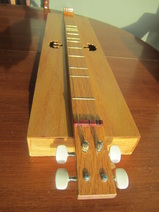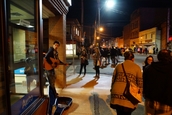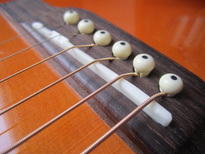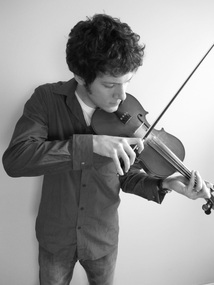|
May 8, 2015
Found-Object Drum Set I’ve always been a fan of anything that gets art into more places, especially places that we don’t often think of that way. That’s why I’m such a fan of buskering (playing music for tips in public). I also am a fan of anything that “unlocks” the music within people or objects. Finally, I’m a fan of recycling and reusing, especially when it’s easy to do. As it happens, my latest musical experiment incorporates all of these elements: I’m working on a junk drum set. I considered the elements in a traditional drum set (snare, bass drum, toms and cymbals), and I asked myself whether I could replicate them with objects I found either at home, or in my neighbours’ recycling bins. Originally, I toyed with making a DIY bass pedal for a larger bass drum, but ultimately, I wanted a junk drum set that was smaller and more portable, without need for a stand to hold the various elements off the ground. I also watched several YouTube videos on found percussion and improvised drums. I found some great ones, like the ones of the Italian drummer Dario Rossi (click here to see his). Some of the drummers quite naturally arranged the found objects on the floor in a semi-circle around themselves, usually sitting cross-legged on the floor. The arrangement looks like the top tier of a typical drum set. My objects are currently as follows: Sticks: two sticks cut from a tree in the woods. I left the bark on the handle portion for a rustic look. Bass drum: medium-sized cardboard box, from a laptop. Snare drums: metal toolbox and a frying pan with a metal jar lid and bottle caps inside. Cymbals: metal lamp, camp cooking pot and drinking cup. Miscellaneous: tambourine and wooden frog (these two are cheating, technically, as they’re purpose-made instruments). I’m neither a trained stick drummer, nor even an experienced one. I’ve only used hand drums (djembe, bongos, bodhran, etc.) so far, and rather simply at that. I have rhythm, but haven’t pursued technical drumming, or drumming with sticks in particular. I’ve always been interested to learn but didn’t pursue it because drum kits are so loud, large and expensive. Also, as a vocalist, drumming wouldn’t be something I could likely do on stage. So, my junk set seems like a good way to work toward better percussion skills in a cheap and easy setup. Here are some pros and cons of this type of improvised set: Pros: 1. Free 2. Reuse and recycle old junk 3. Easy to transport (the whole set fits in a large suitcase) 4. Visually interesting, compared to the same old drum set everyone has seen 5. Not as loud: better for apartments and live acoustic jams 6. Easy to experiment/adapt. New pieces are all around and free Cons: 1. Not loud enough for live shows (though would be with microphones) 2. Some might laugh at its unconventional look 3. The items move on the floor, so precision takes adaptive playing 4. Would be hard to see in a concert setting (on the floor) 5. Durability for some items is an issue (e.g. the cardboard box), but replacements are free 6. Doesn’t have that ‘rock star’ look In the end, I don’t plan to become a professional junk drummer (and, yes, such a thing does exist, as in the group STOMP), but I do plan to improve my percussion skills in general, which I believe has already happened in the few weeks of practice. In particular, my left (non-dominant) hand is coming into its own. This kind of experimental drumming is addictive—grab two pencils or a set of chopsticks, start banging on the desk and you’ll see what I mean!
0 Comments
8. Improve Your Songwriting:
You’d probably like your songs to be remembered for more than 15 minutes. But, how to do that? Well, if we only learn and perform other songs in the current trends, then those are the musical structures, themes, etc. that we will internalize. If you only listen to the flavour of the week, then that’s likely what you’ll write. Traditional folk music, on the other hand, has stood the test of time. So, we can enrich our own songwriting by studying those examples that prove a song can be relevant for hundreds of years. Don’t stop following current trends and the great music of today, but traditional folk music can help you ground your original songs in those deep themes and concepts that go to the root of our humanity. Modern music, after all, evolved from traditional folk music.  4. Recognisability: Not only might the songs be easier for you to learn because you’ve heard them before, but many of your listeners will likewise have heard the songs. It can really be tough to get audiences to engage with brand-new songs, as listeners in venues like bars/pubs tend to want songs they can sing along with, songs they already know. People are creatures of habit, but you can capitalize on that fact by incorporating some traditional songs into your set and/or album. You can lead your audience to see your new songs as part of a tradition that they already know and enjoy.  3. Easily Build Your Repertoire: The fact that traditional folk music is copyright clear could allow you to quickly and easily add songs to your next set list and/or CD. If you’re like me and writing original songs takes you a long time, then adding some traditional songs to your repertoire could be fun and useful, especially if your band hasn’t been writing together long enough to have a full roster of original songs. Moreover, you may already be somewhat familiar with the traditional songs from hearing them performed, which would make learning them quicker.  Copyright-Clear Material: These days when governments and the music industry are cracking down on copyright infringement, traditional folk music offers a safe haven. By definition it is in the public domain. It belongs to the public—to you and to me and to future generations. Do your research to ensure that a given song you want to perform/record is indeed old enough to be copyright-free (usually 75-100 years after publication, but check your country’s laws). If it is old enough, then you can record/perform that song without the hassle of seeking permission or paying for a mechanical and/or sync license. One warning: a song may be traditional though an artist holds copyright in a particular arrangement of the song, so, again, do your research. The effort is worth it, since covering contemporary songs without proper licenses (whether live or in recordings) can land you in legal trouble. (Disclaimer: this is not legal advice.)  For many people, the term “folk music” conjures up only quaint images of geriatric fiddlers or country bumpkins square dancing at the town fair, but folk music can be rewarding in many ways for musicians of any age and from any region, whether rural or urban. Traditional folk music is the enormous body of tunes and songs that have been around long enough to enter the public domain, often of unknown authorship. These songs have stood the test of time, and many popular artists have incorporated them into their repertoires, from Johnny Cash and Dolly Parton, to Simon and Garfunkel, Neil Young and Bob Dylan, to Dropkick Murphys and Metallica. In fact, the 1960s saw a revival of folk music that pushed it into the mainstream, and that revival continues today, albeit less prominently. What follows are ten good reasons to consider learning some traditional folk music, reasons I learned over ten years as a performing singer-songwriter and as a recording artist, both for albums and for YouTube (www.youtube.com/bardofcornwall). My experience is mostly in folk music from the United Kingdom and North America, but these points also apply to many other traditions. Reason 1. Huge Variety: Those who would dismiss folk music as irrelevant to modern listeners generally haven’t experienced even a fraction of the traditional songs that we know of. There are so many to choose from, and so many moods created by them, that there would be some song to suit any musical taste. When it comes to traditional folk music, modern musicians are really spoiled for choice: you could listen for a lifetime and still discover new gems, from comic songs to love ballads to laments for the dead. |
Jesse's BlogThoughts on music and performing by Canadian singer-songwriter Jesse Ferguson. Categories
All
|
 RSS Feed
RSS Feed
